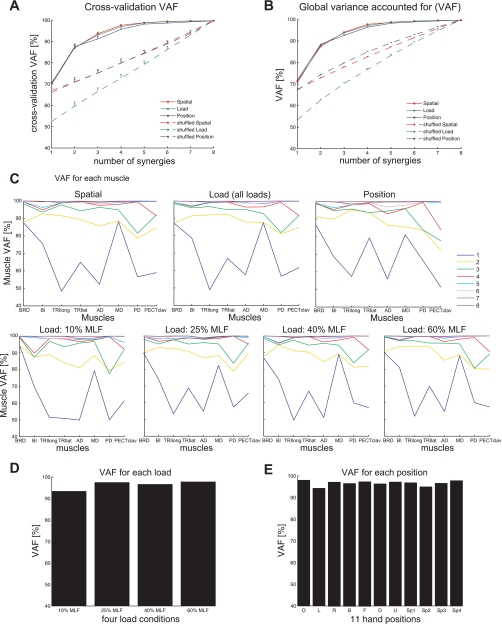Fig. 4.
Variance-accounted-for (VAF) as a function of the number of muscle synergies used for reconstruction, based on EMG data for a representative subject (S5). A and B: the cross-validation VAF and global VAF curves for the spatial, load, and position protocols (red, green, and blue lines, respectively), for original (solid lines) and shuffled (dotted lines) EMG datasets. A: each cross-validation VAF curve (mean ± SD; n = 100) indicates the goodness of reconstructing 40% of an EMG dataset using 1–8 muscle synergies extracted from the remaining EMG data (see materials and methods for the detailed cross-validation procedure). B: each VAF curve (mean ± SD; n = 100) indicates how a set of 1–8 synergies extracted from an EMG dataset could reconstruct the full data. Note that with 4 synergies, both cross-validation VAF and global VAF values in 3 experimental protocols were >90% and significantly higher than the chance level (dotted lines; P < 0.05). C–E: 4 synergies (represented by the red line) extracted from each EMG dataset also provided a good reconstruction of the activation of each muscle (C) and datasets for each load level (load VAF in D) and hand position (position VAF in E). All values were significantly higher than the chance level (P < 0.05). Overall, these results support the ability of 4 synergies to reconstruct muscle activation patterns across widely varying biomechanical conditions.

